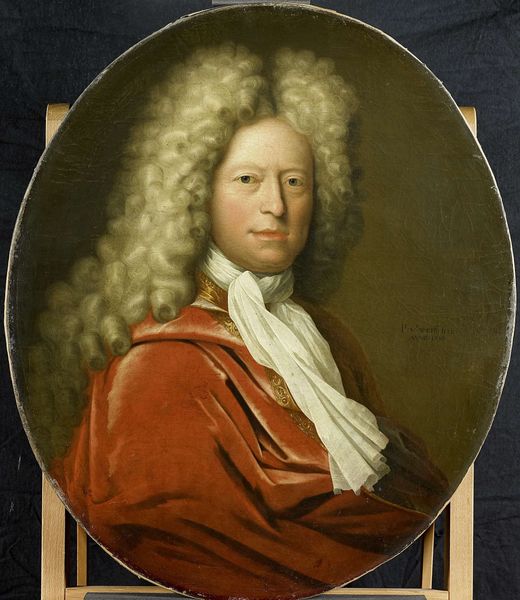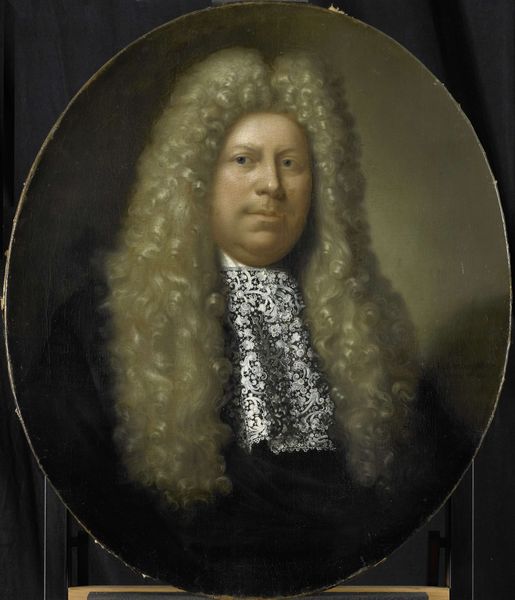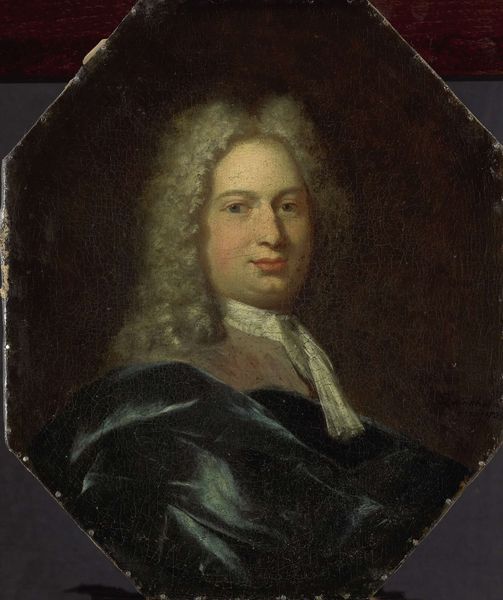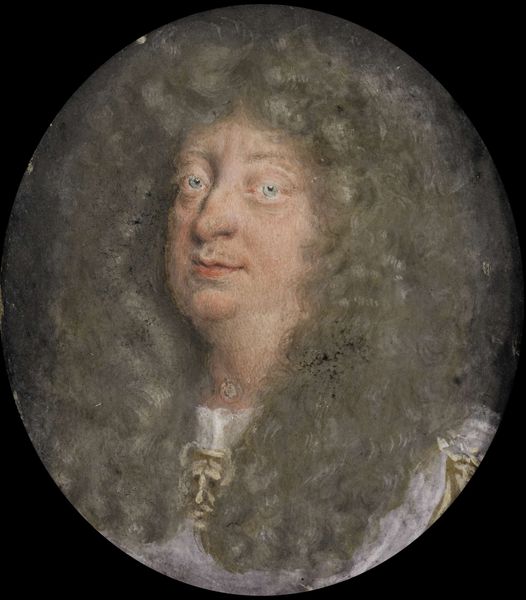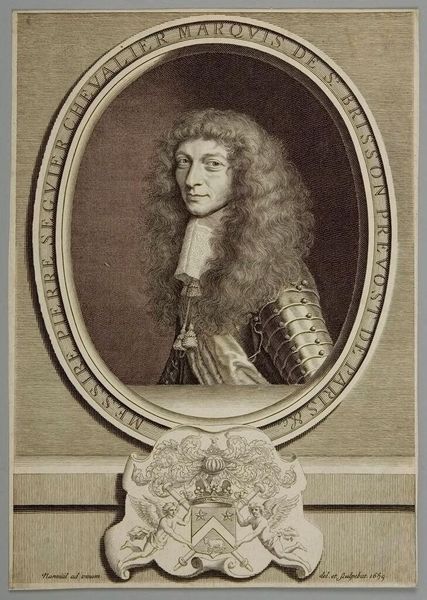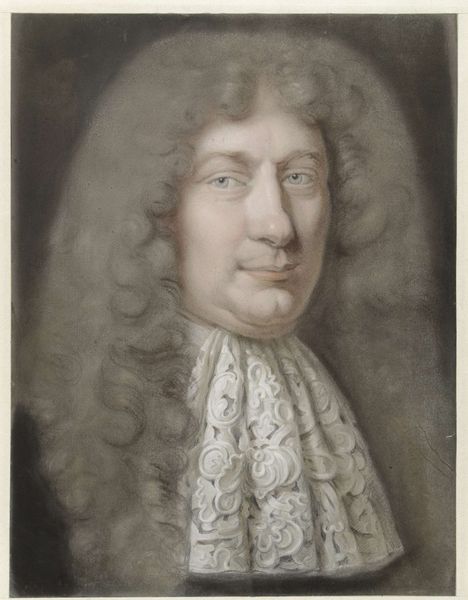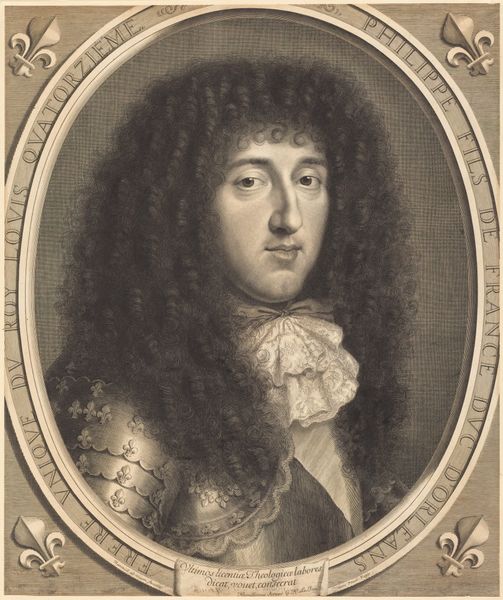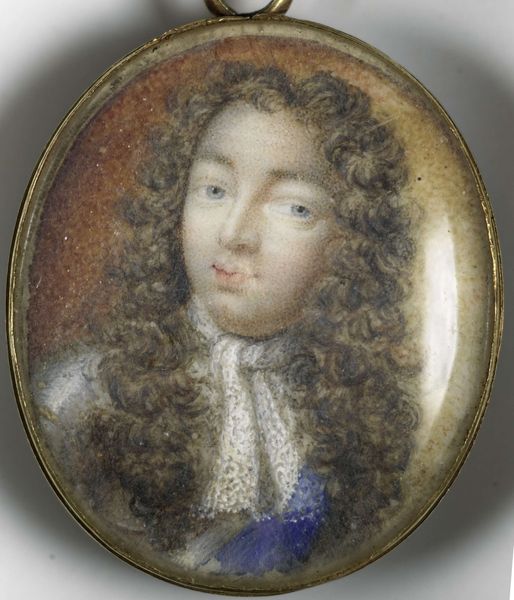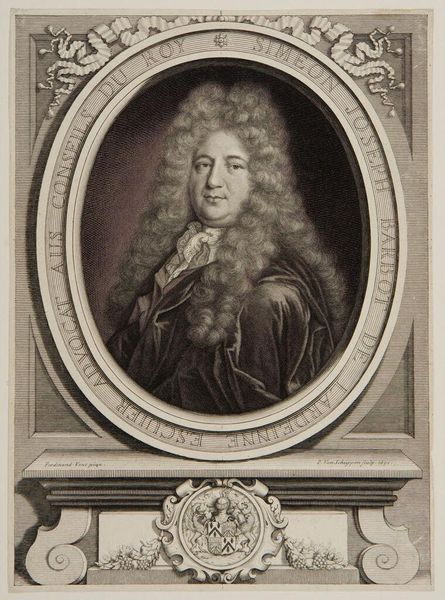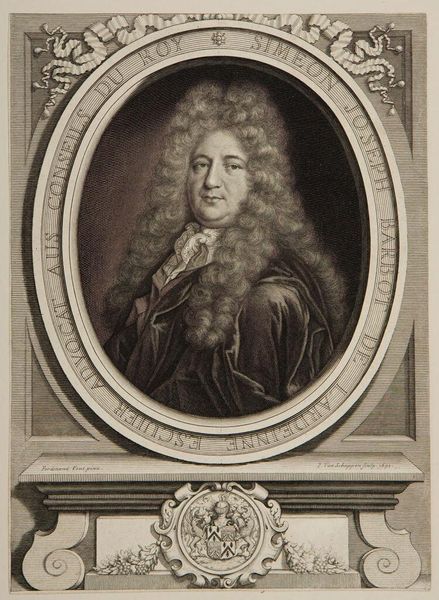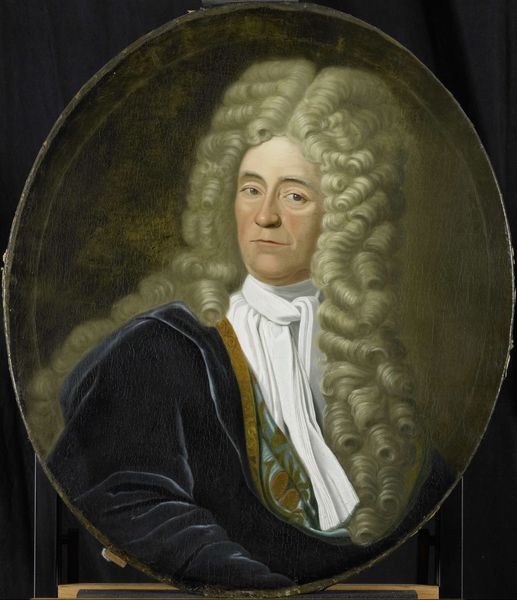
Portrait of Dominicus Rosmale, Director of the Rotterdam Chamber of the Dutch East India Company, elected 1677 1695 - 1722
0:00
0:00
painting, oil-paint
#
portrait
#
baroque
#
portrait image
#
dutch-golden-age
#
painting
#
oil-paint
#
sculpture
Dimensions: height 82 cm, width 68 cm
Copyright: Rijks Museum: Open Domain
Curator: Here we have Pieter van der Werff's portrait of Dominicus Rosmale, Director of the Rotterdam Chamber of the Dutch East India Company. It’s estimated to have been completed sometime between 1695 and 1722, rendered in oil. Editor: It strikes me as an image shrouded in darkness. Almost overwhelmed by it. The way the darkness nearly consumes his features... what’s left glows softly, highlighted against the inky abyss of the background. Curator: Indeed. That intense contrast certainly evokes a specific emotional weight. But let's consider Rosmale himself. As a director within the Dutch East India Company, the symbolism surrounding him is powerful. Consider the weight of his office. The lace collar denotes a certain kind of elite social standing, of course. Editor: True, the finery points to prosperity wrested from global trade, and the production of that lace and tailoring? Entire industries thrived—and suffered—to create the goods depicted here. The portrait becomes less about the individual, and more a ledger of social costs. Curator: An interesting observation. Still, what resonates for me are the quieter elements – the knowing glint in his eyes. Van der Werff has managed to capture a real presence there. It makes me wonder, though, if Rosmale himself approved of how he was represented... whether the symbolic accoutrements truly reflected his sense of self. Editor: Perhaps...or perhaps the portrait served its explicit purpose. A very literal rendering of power and status, meticulously rendered through the artistic conventions and material constraints of the period. He looks a little bit sad. The texture suggests the age of the piece as well—that visible crackle beneath the surface. It lends a mournful air to a portrait meant to be strong, but I wonder if that's just me projecting. Curator: I understand. I think that quality gives the portrait an enduring power. Beyond status and wealth, one sees something of the individual confronting the fleeting nature of existence. Editor: Absolutely. When we view a painting like this, we should try to unpack the complicated economics, trades, industries, and all those globalized concerns represented here and their historical influence. Curator: An insightful way to frame this image within its wider social sphere. Editor: And a powerful prompt, I believe, for viewers to explore more fully those hidden networks behind material production and Dutch mercantile exchange.
Comments
No comments
Be the first to comment and join the conversation on the ultimate creative platform.

